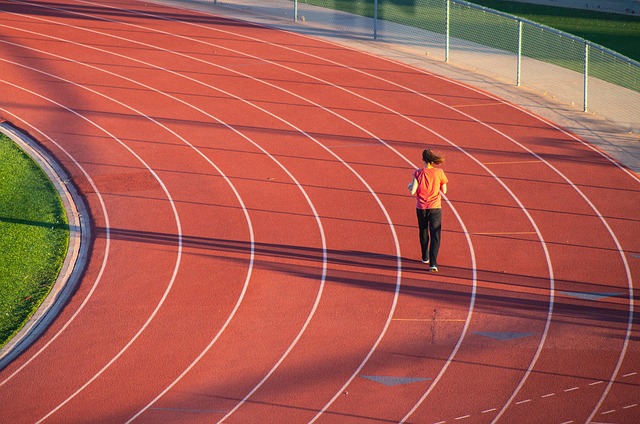Endurance training is often thought of as high‑intensity cardio or long distance running, but a powerful, low‑impact approach lies in the structured flow of yoga. By integrating a series of well‑chosen yoga movements into a regular practice, athletes and fitness enthusiasts can improve stamina, boost muscular endurance, and enhance overall resilience. The following guide explores how to harness the benefits of yoga for endurance, offering detailed movement descriptions, progression strategies, and practical routine ideas.
The Science Behind Yoga Movements and Endurance
When we move mindfully, the body engages a complex interplay between the nervous system, muscular strength, and cardiovascular efficiency. Yoga movements—especially those that combine holding, dynamic flow, and breath regulation—stimulate the parasympathetic nervous system, which aids recovery, while simultaneously training the respiratory system to maintain oxygen delivery during exertion.
- Improved Oxygen Utilization: Breath-focused postures teach diaphragmatic breathing, increasing lung capacity and arterial oxygenation.
- Enhanced Muscular Endurance: Holding poses for extended periods strengthens slow‑twitch muscle fibers, key for endurance activities.
- Joint and Ligament Strength: Repeatedly moving through a full range of motion increases connective tissue resilience, reducing injury risk.
- Neuromuscular Coordination: The balance and stability demands of yoga align proprioceptive feedback, improving movement economy.
Core Yoga Movements for Endurance
Below are five foundational yoga movements that target core, lower body, and cardiovascular endurance. Each pose is described with a focus on form, breath, and the specific endurance benefit it offers.
-
Warrior II (Virabhadrasana II)
Stand with feet wide apart. Turn the right foot out 90°, left foot slightly in. Bend the right knee, align it over the ankle. Extend arms parallel to the floor, gaze over the right hand. Hold for 30–60 seconds, breathing steadily. This pose strengthens the quads, glutes, and shoulders while fostering stability that translates to sustained power in running or cycling.
-
Chair Pose (Utkatasana)
From a standing position, bend the knees and squat down as if sitting in a chair, keeping the chest open and arms lifted. Maintain the position for 30–45 seconds. Chair pose develops lower-body endurance and engages the core, enhancing postural support during prolonged physical activity.
-
Boat Pose (Navasana)
Sit with legs lifted and parallel to the floor, hands alongside the hips. Lean back slightly to create a V shape. Hold for 20–30 seconds. This core-intensive posture trains the abdominal and hip flexors, crucial for maintaining form during long endurance sessions.
-
Extended Side Angle (Utthita Parsvakonasana)
From a lunge, place the forearm on the front thigh and extend the opposite arm overhead, creating a deep side stretch. Hold for 30–45 seconds. This movement increases hip flexor endurance and supports efficient stride mechanics in runners.
-
Plank with Shoulder Tap (Phalakasana Variation)
Assume a forearm plank. Lift one hand to tap the opposite shoulder, alternating sides. Perform for 1–2 minutes. This dynamic pose engages the shoulders, chest, and core while challenging stability, mirroring the demands of sports that require upper-body endurance.
Building a Structured Routine
Creating a consistent yoga routine for endurance begins with a simple framework: a warm‑up, the core endurance movements, a transitional flow, and a cool‑down. Here is a sample 30‑minute session suitable for beginners to intermediate practitioners.
- Warm‑up (5 minutes)
- Cat‑Cow stretches to mobilize the spine.
- Seated deep breathing to focus the mind.
- Light jog in place or high‑knee marching.
- Core Endurance (15 minutes)
- 3 sets of Warrior II (30 seconds hold, 30 seconds rest).
- 3 sets of Chair Pose (30 seconds hold, 30 seconds rest).
- 3 sets of Boat Pose (20 seconds hold, 20 seconds rest).
- Transition Flow (5 minutes)
Link the poses with gentle Sun Salutation B cycles, emphasizing breath synchronization.
- Cool‑down (5 minutes)
Seated forward fold, hip flexor stretch, and a short guided relaxation.
Progression and Variation
To avoid plateauing, gradually increase hold times, add sets, or introduce variations that target the same muscle groups from new angles.
- Warrior II → Warrior II with a 15° twist for oblique engagement.
- Chair Pose → Chair Pose with an arm reach overhead to load the shoulders.
- Boat Pose → Single‑leg Boat to focus on unilateral core strength.
- Extended Side Angle → Add a half‑moon pose to deepen the stretch and build balance.
- Plank Shoulder Tap → Move to a side plank variation, then return to the plank.
Integrating Yoga with Other Training Modalities
Yoga movements complement endurance training in various ways:
- Pre‑Workout: A brief dynamic yoga flow primes muscles, increases blood flow, and raises heart rate safely.
- Post‑Workout: A longer restorative session reduces lactate buildup and encourages active recovery.
- Cross‑Training: Pair yoga with strength or interval training on alternate days to build muscular endurance without excessive overload.
- Mind‑Body Connection: Regular practice of breath awareness improves focus during long runs or races.
Mindful Recovery and Lifestyle Considerations
Endurance is as much about how the body heals as it is about how it performs. Yoga movements help manage recovery through:
- Stress Reduction: Deep breathing activates the vagus nerve, lowering cortisol levels.
- Sleep Quality: Evening yoga routines can signal the body to transition into restorative sleep.
- Hydration Awareness: Focus on breath cues reminds practitioners to stay hydrated.
- Nutrition Synergy: Pairing yoga sessions with a balanced meal can aid muscle glycogen replenishment.
Final Thoughts
Yoga movements are a versatile, science‑backed tool for anyone looking to build endurance and sustain daily fitness. By weaving these poses into a consistent routine—while gradually increasing intensity, pairing them with complementary training, and honoring recovery cues—athletes can experience lasting gains in stamina, joint health, and mental resilience. The path to endurance is not only about pushing harder but also about moving smarter, and the mindful practice of yoga offers that balance in every breath and every hold.




